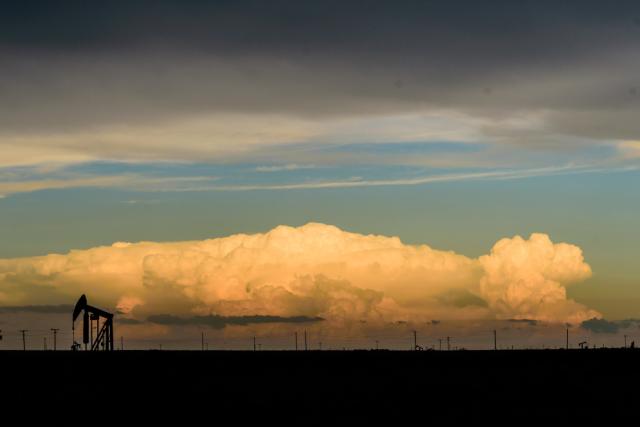
Storm clouds gathering over West Texas. (Source: Shutterstock.com)
[Editor's note: A version of this story appears in the January 2020 edition of Oil and Gas Investor. Subscribe to the magazine here.]
Few places in the world dominate headlines and affect government and company energy strategies like the Permian Basin. The special report you’ll find with the January issue of Oil and Gas Investor commemorates the 100th anniversary of this great region and sheds light on its promising future, as its significance on the world energy scene increases.
The W.H. Abrams No. 1 was spud in Mitchell County in 1920, producing oil from a Permian rock layer. Even though it was a modest well, it was important because E&P companies that were focused on East Texas had not thought much about West Texas until then. Soon, drilling activity expanded out to Midland, south to Pecos, west to Artesia and Hobbs.
Lo and behold, 100 years later we are still learning where and how best to tap into this basin’s vast potential. It’s producing around 4.5 million barrels a day (MMbbl/d), but experts think it has so much more to give. The Global Gas and Oil Network and Oil Change International, using projections from research firm Rystad Energy, said the Permian will account for 40% of all new U.S. production over the next 30 years.
The University of Texas shared this with us: “Recent studies by the Bureau of Economic Geology indicate some 2,700 billion barrels of oil in place in the Wolfcamp and Spraberry of the Midland Basin and about 570 BBOIP in the Wolfcamp and Bone Spring formations of the Delaware Basin,” said Scott Tinker, the Texas state geologist and head of the Bureau at UT, who has been studying the basin for 40 years.
“That’s 3.2 trillion barrels! Even if only 5% is ultimately produced, that represents 160 billion barrels,” he told us. “At 5 million barrels a day—which is approximately 5% of current global oil production—that amounts to nearly 90 years of production.”
From Houston and Wall Street conference rooms to London think tanks to OPEC headquarters, not to mention in the offices of Asian oil importers, the Permian Basin is on everyone’s mind. Who’s in; who’s out? What’s next?
We’ll be answering these questions and more as we cover all aspects of the basin throughout 2020 at HartEnergy.com and PermianBasin100.com, with videos, new reports and past articles from our archives. Look for our February cover story to zero in on the Midland Basin’s progress. And of course, join us at the DUG Permian conference in Fort Worth, Texas, April 6 through 8, as we mark this special anniversary and meet many of the players.
Meanwhile, click here to start reading Permian Basin at 100: The Play That’s Changing Everything. It’s full of history and context, the stories behind legendary people who contributed to the basin’s rise, technology advances and most important, the outlook for the future. We gathered comments from many executives who are active in the basin and these appear throughout the report.
Recommended Reading
Private Producers Find Dry Powder to Reload
2024-09-04 - An E&P consolidation trend took out many of the biggest private producers inside of two years, but banks, private equity and other lenders are ready to fund a new crop of self-starters in oil and gas.
Analyst: Is Jerry Jones Making a Run to Take Comstock Private?
2024-09-20 - After buying more than 13.4 million Comstock shares in August, analysts wonder if Dallas Cowboys owner Jerry Jones might split the tackles and run downhill toward a go-private buyout of the Haynesville Shale gas producer.
Liberty Energy Warns of ‘Softer’ E&P Activity to Finish 2024
2024-07-18 - Service company Liberty Energy Inc. upped its EBITDA 12% quarter over quarter but sees signs of slowing drilling activity and completions in the second half of the year.
Investing ‘Generationally’: The Family Office View of Oil and Gas
2024-07-25 - Key family offices, whose wealth developed from other industries, are filling in oil and gas investment gaps left by the flight of endowment and institutional capital from the space.
BPX’s Koontz: The Rise of a Shale Man
2024-07-02 - CEO Kyle Koontz takes the reins of BPX Energy’s rapid onshore growth amid big changes at BP.
Comments
Add new comment
This conversation is moderated according to Hart Energy community rules. Please read the rules before joining the discussion. If you’re experiencing any technical problems, please contact our customer care team.





